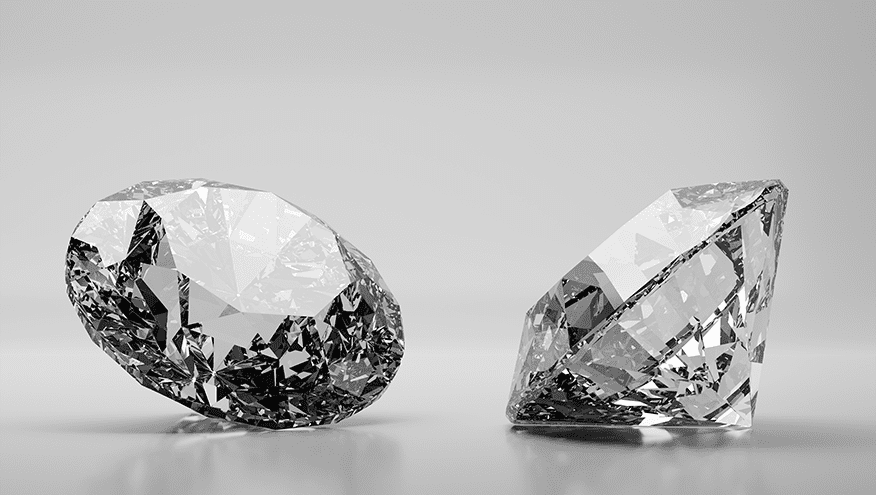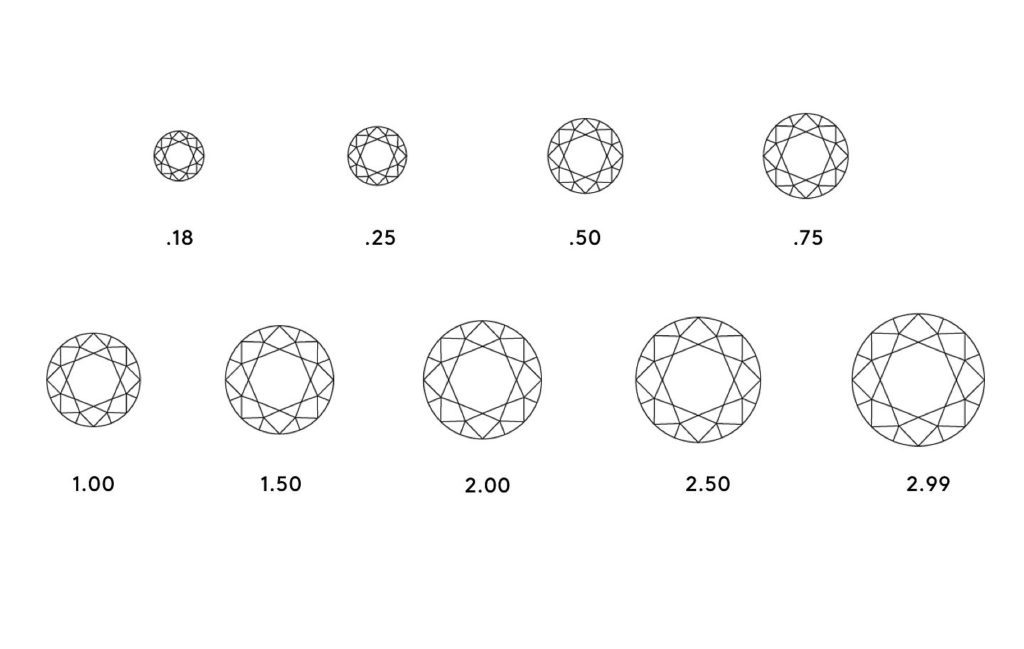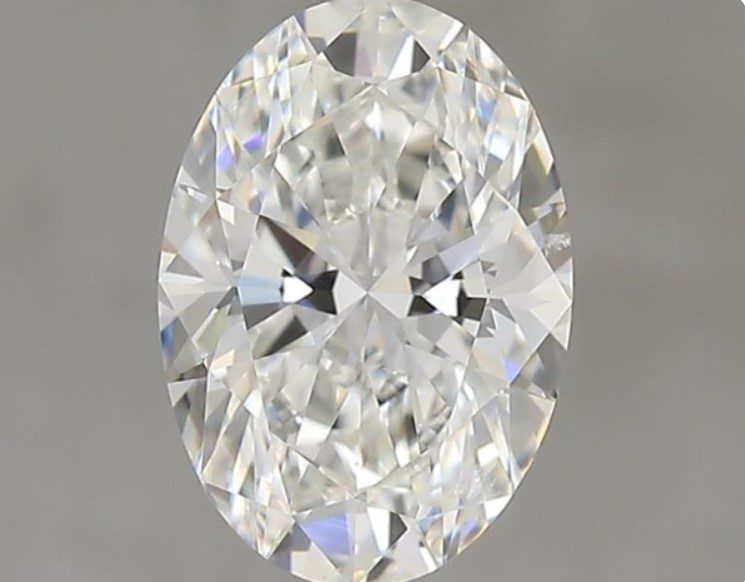The Ojamie 5th C
Buy What You ‘C’
Diamonds 4C’s are marketed as the golden rule to purchasing the best. This though is not entirely true. Sometimes you need to just hand it over to the experts. Here is why.

What We Know: The 4C's
Lorem ipsum dolor sit amet, consectetur adipiscing elit. Ut elit tellus, luctus nec ullamcorper mattis, pulvinar dapibus leo.Lorem ipsum dolor sit amet, consectetur adipiscing elit. Ut elit tellus, luctus nec ullamcorper mattis, pulvinar dapibus leo.Lorem ipsum dolor sit amet, consectetur adipiscing elit. Ut elit tellus, luctus nec ullamcorper mattis, pulvinar dapibus leo.pulvinar dapibus leo.Lorem ipsum dolor sit amet, consectetur adipiscing elit. Ut elit tellus, luctus nec ullamcorper mattis, pulvinar dapibus leo.
Carat
Carat is another term for weight NOT size (common public misconception). 1.0 carat is typically 0.2 grams but when we have a stone which weighs 1.02ct, it cannot be accurately identified on a gram scale. This is especially critical as the difference between a diamond priced in the 0.90ct and the 1.0ct range is on average 28%. The criteria of a diamond size is what we address in the more relevant Ojamie 5th C section. See below.
Clarity
The cleanliness of a diamond. The more inclusions present in a diamond, the lower it goes on the clarity scale. This system features two obvious issues. Number 1, the naked eye cannot see inclusions in the SI2 and sometimes I1 grading. Incredible marketing made us believe we need the higher clarity scale even though we cannot see it. In reality, we can only see what is in the image aside. No inclusions despite the fact that these images have been blown up x10. The only time when we should be considering diamonds around the VS range is when we are after 5.0cts+.
Number 2, the GIA grading system does not correctly take into account other clarity factor: lustre. Two diamonds with the same grade, but different quality lustre, can appear completely different to the eye. Below are 2 SI graded diamonds I came across during my recent buying.
While the diamond on the left is ‘milky’ not showing much life to it, the diamond on the right is much brighter. This is due to the difference in the diamond lustre, yet, both diamonds are considered as SI. This is where you get what you pay for. Many sellers make you believe you are getting an SI diamond like your best friend. True, but one is lifeless and the other one isn’t. When you look at your diamond and wonder just why it isn’t sparkling as it should, this is likely the reason.
Colour
The more of a yellow or brown tinge in a white diamond, the lower the value. It’s considered the lukewarm of diamonds. This of course changes when we reach the yellow and champagne diamond range of colour. This however is not so important when you are sourcing diamonds up to 2cts in size. As registered valuers, gemmologists and qualified diamond graders, we grade the colour of the diamonds through the pavilion (upside down). Reason is, the majority of diamonds appear white from the table (face). So unless you are setting a diamond upside down, then you should not be concerned about buying a diamond as low as an I colour. It is very hard to notice any colour difference between a ‘D’ and an ‘I’ yet the price difference between a 1.0ct D SI1 and a 1.0ct I SI1 is on average 29%. When the diamond is turned face up (the way it sits in a piece of jewellery), it becomes near impossible to pick the colour difference because our eyes are blinded by the sparkle.

Cut
This is the equal most important factor in buying a diamond. If a diamond is cut to the correct angles and proportions, we are left with a diamond that sparkles. A GIA graded diamond as ‘good’ is often a ‘dead’ diamond with less sparkle. Cutting diamonds to their recommended angles requires highly skilled cutters, or alternatively, excellent laser technology, which calculate the perfect angles of cutting a diamond from its original crystal into a sparkling round brilliant cut diamond. The cut grading on the GIA certificates and most grading reports only accounts for round brilliant cut diamonds. Cut on fancy shaped diamonds is not graded by the major labs, which allows vendors to get away with selling poorly cut diamonds with excellent symmetry. This is not a cut grading but simply explains the ‘evenness’ of all the angles. Sometimes this can be bad as at times we need to vary the angles in order to get the best sparkle in a diamond. Therefore, a consultation with a diamond grading specialized gemmologist would be necessary. At Ojamie, we are qualified to grade the cut on fancy shaped diamonds courtesy of the owner and founder being a qualified diamond grader, gemmologist, registered valuer and lecturer in gemmology with 20 years of experience under his belt.
The Ojamie 5th C - Spread
While we take important care in ticking all the boxes with the other 4 C’s, it is critical in taking note of the Ojamie 5th C and it begins with our emphasis on buy what you SEE. It is incredible how often people will buy the certificate and not the diamond because of all the details that the diamond industry has forced into our attention. Buying a D instead of an E or a 1.0ct instead of a 0.90c; our eyes are not naturally trained to see these differences. Diamond clarity is graded using a microscope light that shines from the bottom, yet the sun shines from the above. Diamond colour is graded upside down, yet we look at a diamond from the top. Diamond weight is graded using an expensive and highly accurate scale, but we can’t see such sensitive differences in weight. Unless we are walking around with all these pieces of equipment, then buying the certificate as opposed to the diamond is not your aim. If a diamond ticks all the boxes (not glass filled/laser drilled, not lab grown) and looks nice then the most important factor is spread.
vvvv
At Ojamie, we set up an internal system which allows grading of a diamond most important factor: the spread. It factors the weight of the diamond, colour and clarity with a further emphasis on its spread. Afterall, why acquiring a 2.0ct diamond that is 9.7 x 6.5mm in spread when you can acquire a 1.80ct with the same if not bigger spread or a 2.0ct diamond with a much bigger than average spread. You may think to yourself that’s not such a big difference, but to the naked eye we perceive it as much more than that. Together with spread, comes the importance of the refractive index. The science of the way light passes through a diamond. If the angles of a diamond are not correctly cut to match the extra spread, we end up with a diamond that is leaking light. It simply does not sparkle as it should. For every bit of extra spread you add, you need to correctly angle each facet taking into consideration the refractive index of a diamond. Below you will see a side by side comparison of two diamonds. The diamond was cut according to carat and not the required spread. The result, an overpowering bowtie.
It is crucial that when buying a diamond, you don’t take the grading system you have been taught by the powerful marketing engine, i.e.. the 4 C’s. These grading tools are created as a go to for the general public and give you a set of ‘general’ rules to follow so you hopefully don’t stuff up. It is far from fail safe and in fact, often leads you to being disappointed. The best way to buy a diamond is consult an expert but if you are insistent on doing it alone;
‘Buy What You C’.
George Ojaimi
Founder and Director of Ojamie and Jewellery Valuers Melbourne
Lecturer at the Gemmological Association of Australia
F.G.A.A Gemmologist
NCJV Registered Valuer V0355
Specialist in ‘Synthetic and Imitation’ gemstones
B.Bus (Mktg)
Ask For More Details
Ojamie Diamond Experts can assist you in choosing an engagement ring, personalising a wedding band or selecting a speical anniversary gift








